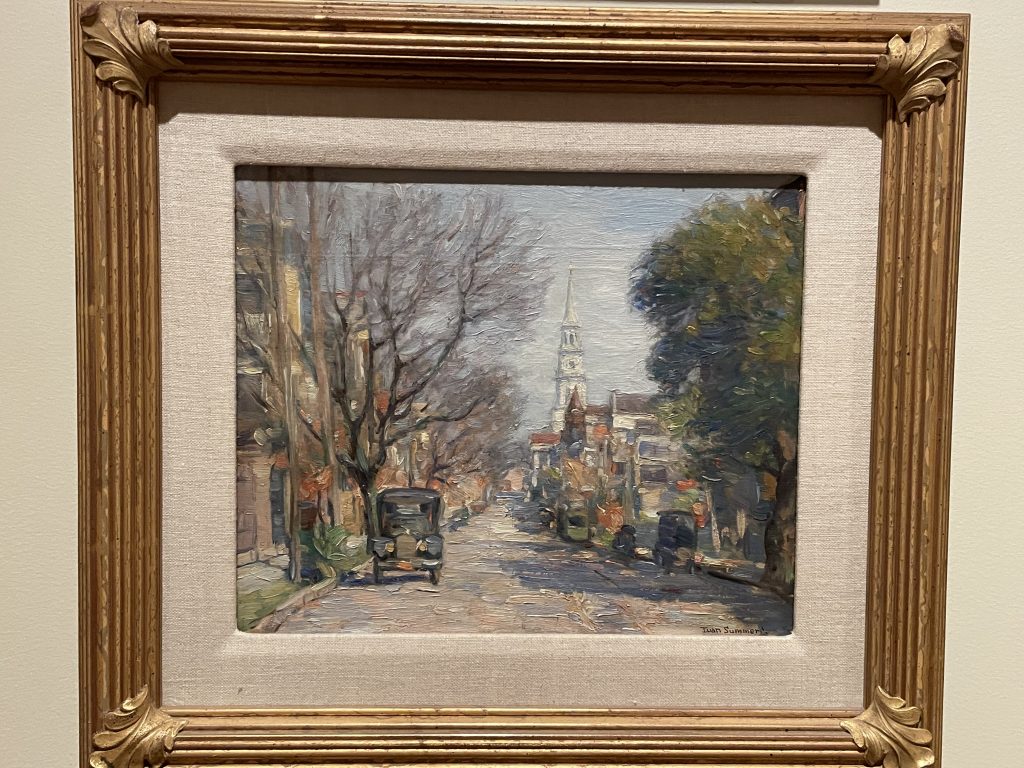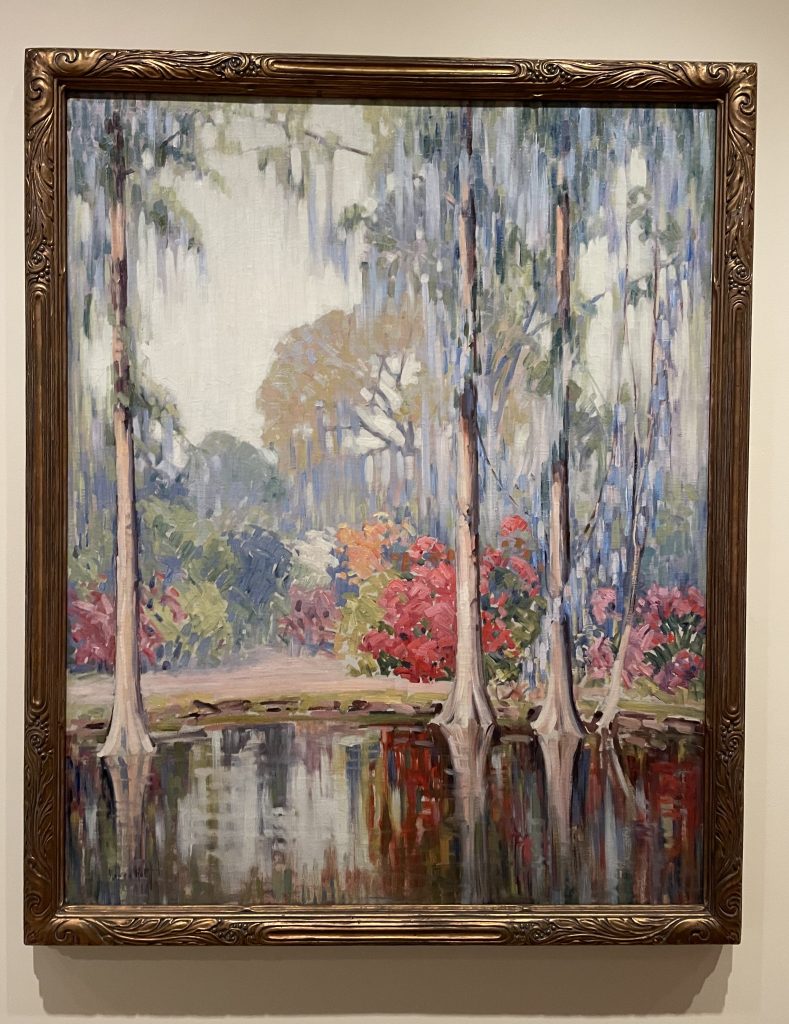The Gibbes Museum of Art is a small art museum in Charleston, South Carolina. It was established in 1858 as the Carolina Art Association, with a goal of promoting fine arts in the state. It moved into its current location, a Beaux Arts building, in 1905, after James Gibbes left funds for the new building in his will.
The museum features primarily American work, many with a regional focus. The museum has a permanent exhibit on miniature portraits, claiming that the first American miniature portraits were done in Charleston (though honestly, how is such a thing to be proven?). The Gibbes’ miniature portraits collection contains more than 600 pieces, making it one of the most comprehensive collections in the United States.


During our visit we saw a large photography exhibit, The Bitter Years: Dorothea Lange and Walker Evans Photographs from the Martin Z. Margulies Collection, which is on display through January 14, 2024.
The exhibit features images that document the Great Depression. Working for the Farm Security Administration, part of Roosevelt’s New Deal program, photographers were hired to capture the social landscape of the country, thus highlighting the challenges facing Americans between 1935 and 1944.
The cover photo to this post is from this exhibit, Farmer Who Will Be Resettled. Wolf Creek Farms, Georgia. FSA, 1935 by Arthur Rothenstein.













